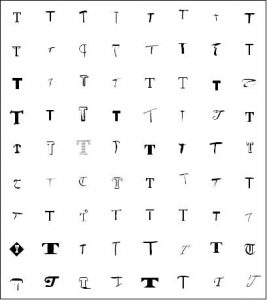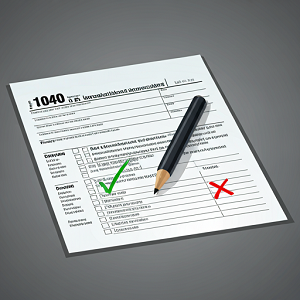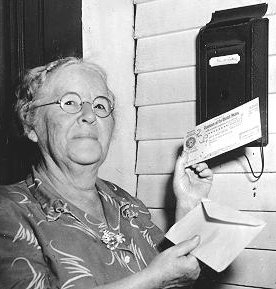 How is the Spousal Benefit calculated? I’ve covered this topic in several prior posts, but thought I’d give it another shot, to hopefully close this chapter for now. I’ve heard conflicting answers from various corners of the SSA world – both personally and from reader communications. Too often there is a pat answer that the Spousal Benefit, if taken at FRA (Full Retirement Age) is always 50% of the other spouse’s PIA (Primary Insurance Amount). This is not always the case; if the individual has begun receiving retirement benefits based on his or her own record before FRA and then later begins receiving the Spousal Benefit, the Spousal Benefit will be something less than 50%.
How is the Spousal Benefit calculated? I’ve covered this topic in several prior posts, but thought I’d give it another shot, to hopefully close this chapter for now. I’ve heard conflicting answers from various corners of the SSA world – both personally and from reader communications. Too often there is a pat answer that the Spousal Benefit, if taken at FRA (Full Retirement Age) is always 50% of the other spouse’s PIA (Primary Insurance Amount). This is not always the case; if the individual has begun receiving retirement benefits based on his or her own record before FRA and then later begins receiving the Spousal Benefit, the Spousal Benefit will be something less than 50%.
When an individual begins receiving retirement benefits based upon his or her own record has a lasting effect on the amount of all retirement benefits that this individual will receive, including Spousal Benefits. This is due to the fact that the Spousal Benefit, when the retirement benefit is present, is an offset amount based upon the difference between the maximum Spousal Benefit (50% of the other spouse’s PIA) and the PIA of the first spouse.
The early retirement benefit amount calculation is fairly straightforward (at the link you’ll find a detailed explanation). The individual’s PIA is reduced by a factor based upon the number of months prior to Full Retirement Age that he or she has applied for benefits.
Knowing the individual’s PIA, the next factor in the calculation is the other spouse’s PIA, and the maximum amount of Spousal Benefit will be 50% of that PIA. This factor is available if the individual is at least Full Retirement Age. The reduction in overall benefits is the difference between 50% of the second spouse’s PIA and the first spouse’s PIA. This is also known as the excess Spousal Benefit.
Example
Okay, this is confusing as all get-out without an example. Let’s say Dick and Jane are a married couple, with PIAs of $2,200 and $800 respectively. Dick and Jane are both age 66, Full Retirement Age. Jane started receiving her own retirement benefit at age 62, which is reduced to $600 since she started early. Dick intends to delay his retirement benefit to age 70 for the maximum benefit. So at age 70 (for both of them) Dick files for his own, delay-credit-enhanced benefit, in the amount of $2,904.
How much of a total benefit will Jane receive when Dick files, under these circumstances? Here’s how it works: Jane’s PIA is subtracted from half of Dick’s PIA – $1,100 minus $800 = $300. This amount is the excess Spousal Benefit for Jane, which is added to her own benefit to produce her total benefit. Adding $300 to $600 equals $900. This is $200 less than 50% of Dick’s PIA (remember the pat answer from before?).
Another Example
Okay, what if there are a few changes to the above example: Dick is two years older than Jane – she’s 64 and he’s 66. He files for his own benefit at age 66, his Full Retirement Age, which results in Jane getting the Spousal Benefit at her current age of 64, through deemed filing. She can’t delay receipt of the Spousal Benefit, in other words.
Here is the way this calculation works (and some shorthand for the reductions):
- Determine Jane’s reduced monthly benefit ($600)
- Take Jane’s unreduced PIA and subtract it from half of Dick’s unreduced PIA ($1,100 minus $800 = $300). This amount is referred to as the excess Spouse Benefit amount.
- If Jane is under Full Retirement Age (FRA), determine the number of months before FRA – in her case, it’s 24, as age 64 is 24 months before age 66.
- Multiply the excess Spouse Benefit amount by the amount determined by subtracting her number of months prior to FRA from 144. ($300 times (144 minus 24) equals $36,000).
- Then divide that number by 144 ($36,000 divided by 144 equals $250). $250 is then added to her own retirement benefit amount to come up with the total benefit ($250 plus $600 equals $850).
Now, taking this one step further: If Jane is eligible for the Spousal Benefit more than 36 months before FRA (such as if Jane was 62 when Dick is 66 and he files at that age), then the above calculations would be changed slightly:
- Determine Jane’s reduced monthly benefit ($600)
- Take Jane’s unreduced PIA and subtract it from half of Dick’s unreduced PIA ($1,100 minus $800 = $300). This amount is referred to as the Excess Spouse Benefit amount.
- If Jane is under Full Retirement Age (FRA), determine the number of months before FRA – in this case, it’s 48, as age 62 is 48 months before age 66.
- Multiply the excess Spouse Benefit amount by the amount determined by subtracting her number of months greater than 36 prior to FRA from 180. ($300 times (180 minus 12) equals $50,400).
- Then divide that number by 240 ($50,400 divided by 240 equals $210). $210 is then added to her own retirement benefit amount to come up with the total benefit ($210 plus $600 equals $810).
It should be noted that if Jane had not filed for her own benefit before FRA and she waits until FRA to file for the Spousal Benefit, she will be eligible for a Spousal Benefit equal to 50% of Dick’s PIA – assuming that Dick has filed for his own benefit.
Hope this helps to clear things up a bit. If not, please leave your questions in the comments section below and we’ll work together to come up with answers.








 Many of us are covered by one or more types of defined contribution retirement plans, such as a 401(k), 403(b), 457, or any of a number of other plans. What many of these plans have in common is that they are referred to as Cash Or Deferred Arrangements (CODA), as designated by the IRS. These plans are also often referred to as Qualified Retirement Plans (QRPs). Each type of plan has certain characteristics that are a little different from other plans, but most of them have the common characteristic of deductibility from current income and deferred taxation on growth. (Note that this list of plans does not include IRAs. IRAs have certain characteristics that are completely different from QRPs, and vice-versa. Also, Designated Roth Contributions, such as Roth 401(k), has certain different attributes compared to the non-Roth variety we’re discussing here.)
Many of us are covered by one or more types of defined contribution retirement plans, such as a 401(k), 403(b), 457, or any of a number of other plans. What many of these plans have in common is that they are referred to as Cash Or Deferred Arrangements (CODA), as designated by the IRS. These plans are also often referred to as Qualified Retirement Plans (QRPs). Each type of plan has certain characteristics that are a little different from other plans, but most of them have the common characteristic of deductibility from current income and deferred taxation on growth. (Note that this list of plans does not include IRAs. IRAs have certain characteristics that are completely different from QRPs, and vice-versa. Also, Designated Roth Contributions, such as Roth 401(k), has certain different attributes compared to the non-Roth variety we’re discussing here.)



 In case you don’t know what a 72t distribution is, this is shorthand for the Internal Revenue Code Section 72 part t (or IRC §72(t) for short), and the most popular provision of this code section is known as a Series of Substantially Equal Periodic Payments – SOSEPP is the acronym.
In case you don’t know what a 72t distribution is, this is shorthand for the Internal Revenue Code Section 72 part t (or IRC §72(t) for short), and the most popular provision of this code section is known as a Series of Substantially Equal Periodic Payments – SOSEPP is the acronym.

 Financial planning often requires us to face our own certain demise – something that we never wanted to do, but still a certainty that we all must face.
Financial planning often requires us to face our own certain demise – something that we never wanted to do, but still a certainty that we all must face. When you have a 401(k) plan that contains stock in your company, there is a special provision in the tax law that may be beneficial to you. This special provision is called Net Unrealized Appreciation, or NUA, treatment. It allows you to take advantage of potentially lower tax rates on the growth, or unrealized appreciation, of the stock in your company.
When you have a 401(k) plan that contains stock in your company, there is a special provision in the tax law that may be beneficial to you. This special provision is called Net Unrealized Appreciation, or NUA, treatment. It allows you to take advantage of potentially lower tax rates on the growth, or unrealized appreciation, of the stock in your company.


 Sterling Raskie, MSFS, CFP®, ChFC®
Sterling Raskie, MSFS, CFP®, ChFC® The latest in our Owner’s Manual series, A 401(k) Owner’s Manual, was published in January 2020 and is available on
The latest in our Owner’s Manual series, A 401(k) Owner’s Manual, was published in January 2020 and is available on  A Medicare Owner’s Manual, is updated with 2020 facts and figures. This manual is available on
A Medicare Owner’s Manual, is updated with 2020 facts and figures. This manual is available on  Social Security for the Suddenly Single can be found on Amazon at
Social Security for the Suddenly Single can be found on Amazon at  Sterling’s first book, Lose Weight Save Money, can be
Sterling’s first book, Lose Weight Save Money, can be  An IRA Owner’s Manual, 2nd Edition is available for purchase on Amazon. Click the link to choose the
An IRA Owner’s Manual, 2nd Edition is available for purchase on Amazon. Click the link to choose the  Jim’s book – A Social Security Owner’s Manual, is now available on Amazon. Click this link for the
Jim’s book – A Social Security Owner’s Manual, is now available on Amazon. Click this link for the  And if you’ve come here to learn about queuing waterfowl, I apologize for the confusion. You may want to discuss your question with Lester, my loyal watchduck and self-proclaimed “advisor’s advisor”.
And if you’ve come here to learn about queuing waterfowl, I apologize for the confusion. You may want to discuss your question with Lester, my loyal watchduck and self-proclaimed “advisor’s advisor”.